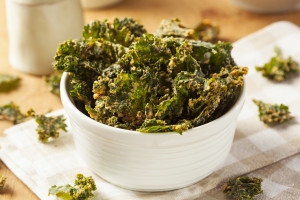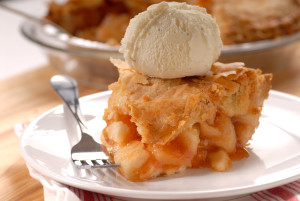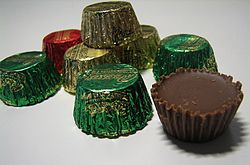Did your Halloween sugar hangover look more like a celebration of Dia de Muertes (Day of the Dead)? Are you on a continual sugar crash that makes you a little cranky, tired and looking for your next sugar fix?
Welcome to the Season of the Sugar Rush.

Let’s be honest. No one celebrates Thanksgiving with turkey and wraps it up with a steaming cup of black coffee and a nice bowl of kale.
For many, Halloween kicks off the first of several months centered on sugar consumption. From the moment kids bring home their pillowcases full of candy to the last piece of chocolate mousse cake inhaled as the ball drops, candy and dessert is everywhere.
Peanut butter cups, hot cocoa, pumpkin pie, sugar cookies, you  name it. The days are getting colder, the sun is rarely seen and we become stressed and overscheduled with gatherings and shopping. We look for comfort (sugar makes us feel good) and we celebrate with loved ones (it’s only once a year so, yes, grandma, I will have a slice of your apple pie a la mode with your homemade caramel sauce poured on top, thank you.)
name it. The days are getting colder, the sun is rarely seen and we become stressed and overscheduled with gatherings and shopping. We look for comfort (sugar makes us feel good) and we celebrate with loved ones (it’s only once a year so, yes, grandma, I will have a slice of your apple pie a la mode with your homemade caramel sauce poured on top, thank you.)
All that sweet stuff tastes good going down but what is it really doing inside your body? It’s probably something we all should take a moment to think about . . .
On the Way Down
Sugar hits your tongue first, lighting up your taste buds, and sending messages (yum!) to your brain. This triggers the reward system in your brain to release dopamine, a hormone that makes us feel good.
We eat candy.
We feel good.
We crash.
We continue to eat candy to feel better. It’s a trick. We get stuck in a loop.
Once sugar hits your stomach, it is bombarded with digestive juices and enzymes to cleave the carbohydrates into molecules of glucose and fructose that shuttle into your small intestine.
The Story of Glucose & Fructose
Glucose trickles through the walls of your small intestine and tells your pancreas to release insulin, a hormone that pulls glucose from your bloodstream and delivers it to your cells for energy. Fructose gets shuttled to your liver to be turned into stored energy.
What happens when you don’t stop? This is your body on a sugar binge:
You crash.
As you continue to sip that gingerbread latte, your pancreas, being a bit of an overachiever, floods your system with insulin to bring your sugar levels down. It tends to initially overshoot resulting in blood sugar levels that fall below normal creating your sugar crash.
Whah whah.
We don’t feel great so our body, wishing to bring its blood sugar level back up to normal responds with a loud “WE WANT SUGAR!” We then consume more sweet stuff to feel better and the loop continues. More tricks.
We eat sugar.
We feel good.
We crash.
We feel bad.
We want more sugar. See the trend?
As you continue to binge on peanut butter cups, your pancreas pumps out so much insulin your cells stop responding and all the leftover glucose stays in your bloodstream. Continued over time, your cells become like a crotchety old person on Halloween (they won’t stop knocking on our door!) and stop responding (let’s turn off the lights and pretend not to be home). This lack of sensitivity to insulin is known to lead to Type 2 diabetes.
When your liver has more fructose than it can manage, it gets overwhelmed, calls the pancreas to help – which further stresses your pancreas and over time prompts fat to grow throughout the organ as a precursor to non-alcoholic fatty liver disease.
You. Are. Starving. Not.
High insulin levels block your body’s production of leptin, the hormone that tells your brain you are full. Without leptin, you feel hungry, even if you have just eaten a sleeve of oreos. Your brain thinks it’s famished (I’m hungry so I must be lacking food) so it triggers cravings and more eating. All that excess glucose in your blood stream has to go somewhere so your brain tells your body to store it as fat to prevent future starvation. Obesity results.
Your belly gets bigger.
Too much fructose lowers HDL (the “good cholesterol”) levels in your body and triggers the production of triglycerides (a type of fat) that migrates from your liver to your arteries for building and repair. When triglyceride levels in your blood get too high, the fats are stored in your belly. This visceral belly fat increases your risk for heart attack or stroke.
You become vulnerable.
According to a study by the American Journal of Clinical Nutrition, consuming 100 grams of sugar decreased the ability of white blood cells to engulf and destroy invaders (bacteria) trying to do your body harm. The effect was greatest between one and two hours post sugar consumption but lasted up to 5 hours.
It means eating a lot of sugar compromises your immune system and make you vulnerable to getting sick. A scoop of Aunt Justine’s marshmallow topped candied sweet potatoes, a quarter cup of jellied cranberry sauce and a slice of grandma’s pumpkin pie with whipped cream will get you to 100 grams of sugar without blinking.
I sure hope Uncle Henry washed his hands after he sneezed.
Why doesn’t fruit have the same effect?
Fruit is the whole package. Just like that Twix bar, a piece of fruit, comes with plenty of fructose and glucose. Unlike that Twix bar, it also contains all the vitamins, minerals and enzymes needed to digest it, as well as lots of fiber to slow its digestion. All that fiber staves off insulin spikes as well as overconsumption. To consume the same amount of fructose found in a can of coke, you would need to eat six cups of strawberries. Which one do you think will make you feel full afterwards?
If you are relatively fit and eat a healthy diet most of the time, a piece of cake or a fun sized something or other is not going to kill you. Your body will process it and move on to the salad you are having for dinner. However, if you continually binge on those full sized butterfingers you bought at 50% off the day after Halloween, you will eventually suffer the consequences.
The good news is, if you suspect you are headed towards Type 2 diabetes or leptin resistance, both trends are possible to reverse if you simply cut back your sugar consumption.
If you get stuck in the “feel good, crash, eat more sugar to feel better” loop, recognize it and try to step out of it. Put the bag of M&Ms down, back away slowly and pick up a piece of fruit. The sweet taste will send the same feel good vibes to your brain, the fiber will fill you up, and because it doesn’t come with the insulin spike and crash, you can walk away smiling and break the cycle.
Beware this holiday season: sugar trickery abounds.
Sorry, Peanut Butter Cup, you fooled me yesterday.
Not today.


Great article, Sherry! Our brain likes to trick us all of the time. It is so hard to stop the sugar binge once it starts. Great insight on what happens in your body. It can help you think twice about eating that sugary food next time you want it. Also, great information about fruits. People often are confused since fruits do have sugar!
Great article. Somehow we need to curb the sweets entering Bsdi. It doesn’t help us stay on track with our ideal health goals. Thx again for a wonderful post.
thank you for this article
Great post, Sherry. Thanks for the easy to understand explanation on how glucose and fructose effects our body. It was both interesting and a bit depressing at the same time!
You’re very welcome. One cupcake is okay, 5 cupcakes is a problem for your pancreas. Even if they are teeny tiny cupcakes. 🙂
Sugar may very well be why I’m not getting anywhere with my attempted weight loss. I’ve tried to eat better as well as use my treadmill more often but I have recently gotten away from it. On Friday (lol) I will recommit myself to eating better, using my treadmill 3 times a week as well as look for places to cut my sugar consumption. Very good article!
Thanks Mike and good luck! Yes, Friday is a great day to start. 😉 Sugar is a sneaky little bugger that finds its way into many pre-packaged foods. Read your nutrition labels carefully and be on the look out for added sweetness (you probably don’t need it)!
Great article. Helps to understand the difference between the sugars in candy and the sugars that are in fruit. I am a chocoholic. however, I have noticed that when I eat fruit, I don’t want the chocolate as much. And, you are right, you get one piece of chocolate and your body craves more chocolate. Whereas, if you eat an apple, you seem to be satisfied. Good job.
It is always important to check the labels even on fruit. Be aware of the sprays used on the fruit to keep is in storage longer.
great article
Thanks for the article
sugar is quick energy that leaves you flat
great Article!!
I find the antidote to sweet is SAVORY
No more doughnuts
Whole fruits give a nice balance to the sugar/fiber ratio
It seems hard to resist the sugar temptation. Especially when you miss your lunch break.
What about a chocolate craving? Anybody have one of these?